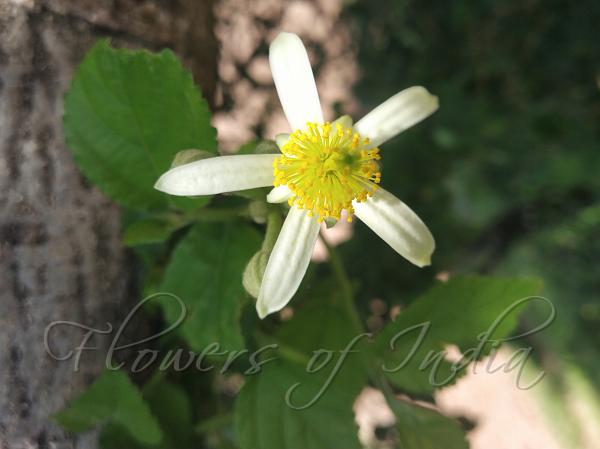|
| Bihul |
|

|

| File size | 372974 |
| Original date | 6/14/20 12:16 PM |
| Resolution | 4000 x 3000 |
| Flash | Flash did not fire, auto |
| Focal length | 3.81mm |
| Exposure time | 1/296s |
| Aperture | 2.2 |
| Focus Distance | |
| Metering Mode | Center weighted average |
| Camera make | Xiaomi |
| Camera model | Redmi Note 5 Pro |
| Sensor type | OneChipColorArea |
|
|
|
|
Photo: |
Botanical name: Grewia optiva Family: Tiliaceae (Falsa family)
Synonyms: Grewia oppositifolia
Synonyms: Grewia oppositifolia
Bihul is a small to medium-sized deciduous tree, 9-12 m in height. Crown
is spreading, bole is clear, 3-4 m, and about 1 m diameter. Branches are
smooth, pale silvery-brown, bark dark brown, thick and roughish, peeling
in small woody scales. Blaze is rather fibrous, pale yellow, often tinged
pink towards the exterior, juice slimy. Leaves are opposite, 5-13 cm x 3-6
cm, ovate, long-pointed, closely toothed, teeth small, blunt. Leaves are
rough and hairy above, velvety beneath. Base is rounded, slightly oblique,
3-nerved. Leaf-stalk is 0.3-1 cm long, stout, velvety. Stipules are 0.5 cm
long, linear subulate, falling off. Flowers are borne 1-8 together, on a
solitary stalk, opposite the leaf or exceptionally in leaf axils. The
stalk is 2-3.5 cm long, densely hairy. Flowers yellowish-red, about 3.5 cm
across. Sepals 1-1.5 cm long, linear oblong, 3-ribbed, green outside,
white, pale yellow or red inside. Petals are white or pale yellow, shorter
than the sepals, linear, claw distinct. Fruit is a drupe, 1-4 lobed, each
lobe about 0.8 cm in diameter, olive green then black when ripe. The genus
was named after Nehemiah Grew (1641-1712), one of the founders of plant
physiology. Bihul is found in the Himalayan regions in Pakistan, Nepal,
India, usually between 500 and 2500 m. Flowering: April-September.
| Identification credit: Amit Kumar | Photographed in Rajouri, J&K & FRI, Dehradun. |
• Is this flower misidentified? If yes,